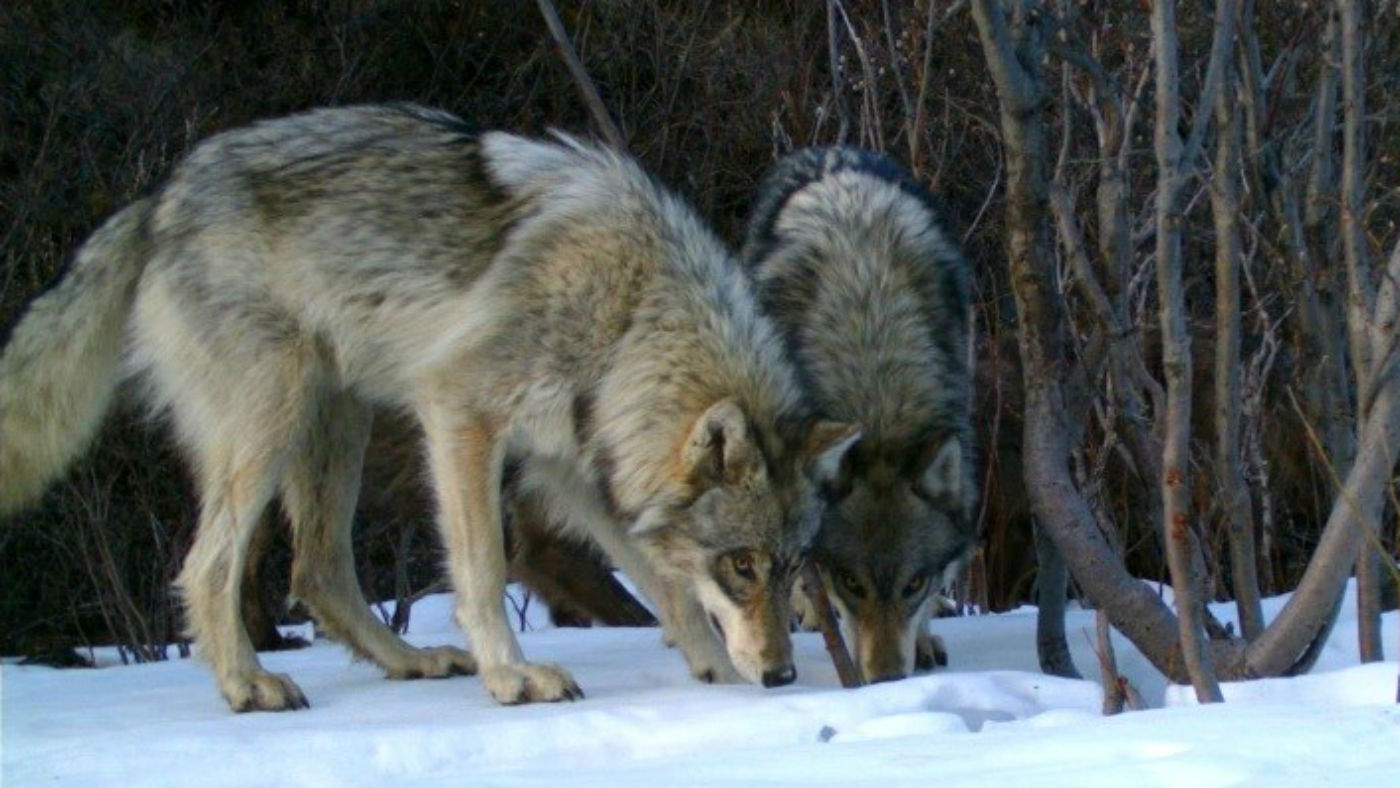Are Chernobyl wolves spreading mutant genes?
Fears of contamination as young wolf traced 230 miles from home in radiation zone

Wolves from the Chernobyl site have been tracked roaming freely beyond the nuclear disaster zone’s border, sparking fears that they may spread mutant genes.
Chernobyl, near the border between Ukraine and Belarus, was declared officially off-limits to humans amid concerns over radiation following the meltdown at the then-Soviet nuclear power plant on 26 April 1986.
The area has been reopened for short-term visits by tourists in recent years, but visitors are told not to touch anything within the blast area and are screened for radioactive particles before they leave.
The Week
Escape your echo chamber. Get the facts behind the news, plus analysis from multiple perspectives.

Sign up for The Week's Free Newsletters
From our morning news briefing to a weekly Good News Newsletter, get the best of The Week delivered directly to your inbox.
From our morning news briefing to a weekly Good News Newsletter, get the best of The Week delivered directly to your inbox.
The lack of human activity in the 18.6-mile-wide exclusion zone has allowed animals to thrive there, with hundreds of wolves now roaming free, reports Sky News.
Scientists have used GPS collars to track 13 fully grown grey wolves and one young male in order to see how far they stray from the exclusion zone.
Although the adults remained in the nearby area, the youngest was traced up to 229 miles (369km) away, according to the researchers, who have published their findings in the European Journal of Wildlife Research.
This “raises questions about the potential spread of radiation-induced genetic mutations to populations in uncontaminated areas”, says the research paper.
A free daily email with the biggest news stories of the day – and the best features from TheWeek.com
“Instead of being an ecological black hole, the Chernobyl exclusion zone might actually act as a source of wildlife to help other populations in the region,” wildlife ecologist Michael Byrne, who led the study, told the Live Science news website. “And these findings might not just apply to wolves - it’s reasonable to assume similar things are happening with other animals as well.”
However, Byrne noted that there is no evidence to prove that genetic mutations are being spread, adding: “No wolves there were glowing - they all have four legs, two eyes and one tail.”
-
 5 fairly vain cartoons about Vanity Fair’s interviews with Susie Wiles
5 fairly vain cartoons about Vanity Fair’s interviews with Susie WilesCartoon Artists take on demolition derby, alcoholic personality, and more
-
 Joanna Trollope: novelist who had a No. 1 bestseller with The Rector’s Wife
Joanna Trollope: novelist who had a No. 1 bestseller with The Rector’s WifeIn the Spotlight Trollope found fame with intelligent novels about the dramas and dilemmas of modern women
-
 Codeword: December 20, 2025
Codeword: December 20, 2025The daily codeword puzzle from The Week
-
 Home Office worker accused of spiking mistress’s drink with abortion drug
Home Office worker accused of spiking mistress’s drink with abortion drugSpeed Read Darren Burke had failed to convince his girlfriend to terminate pregnancy
-
 In hock to Moscow: exploring Germany’s woeful energy policy
In hock to Moscow: exploring Germany’s woeful energy policySpeed Read Don’t expect Berlin to wean itself off Russian gas any time soon
-
 Were Covid restrictions dropped too soon?
Were Covid restrictions dropped too soon?Speed Read ‘Living with Covid’ is already proving problematic – just look at the travel chaos this week
-
 Inclusive Britain: a new strategy for tackling racism in the UK
Inclusive Britain: a new strategy for tackling racism in the UKSpeed Read Government has revealed action plan setting out 74 steps that ministers will take
-
 Sandy Hook families vs. Remington: a small victory over the gunmakers
Sandy Hook families vs. Remington: a small victory over the gunmakersSpeed Read Last week the families settled a lawsuit for $73m against the manufacturer
-
 Farmers vs. walkers: the battle over ‘Britain’s green and pleasant land’
Farmers vs. walkers: the battle over ‘Britain’s green and pleasant land’Speed Read Updated Countryside Code tells farmers: ‘be nice, say hello, share the space’
-
 Motherhood: why are we putting it off?
Motherhood: why are we putting it off?Speed Read Stats show around 50% of women in England and Wales now don’t have children by 30
-
 Anti-Semitism in America: a case of double standards?
Anti-Semitism in America: a case of double standards?Speed Read Officials were strikingly reluctant to link Texas synagogue attack to anti-Semitism